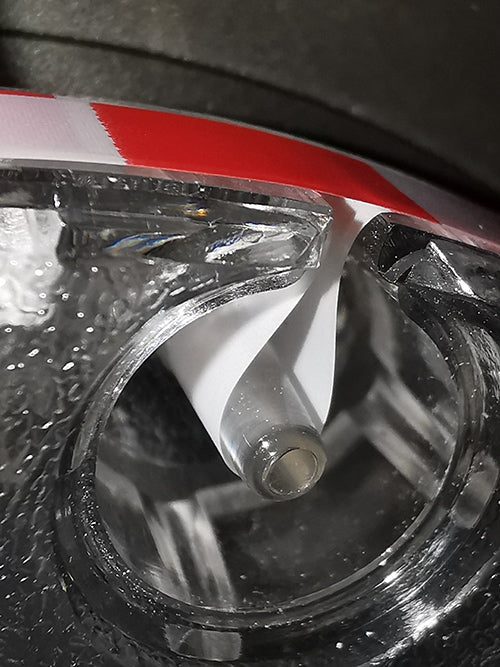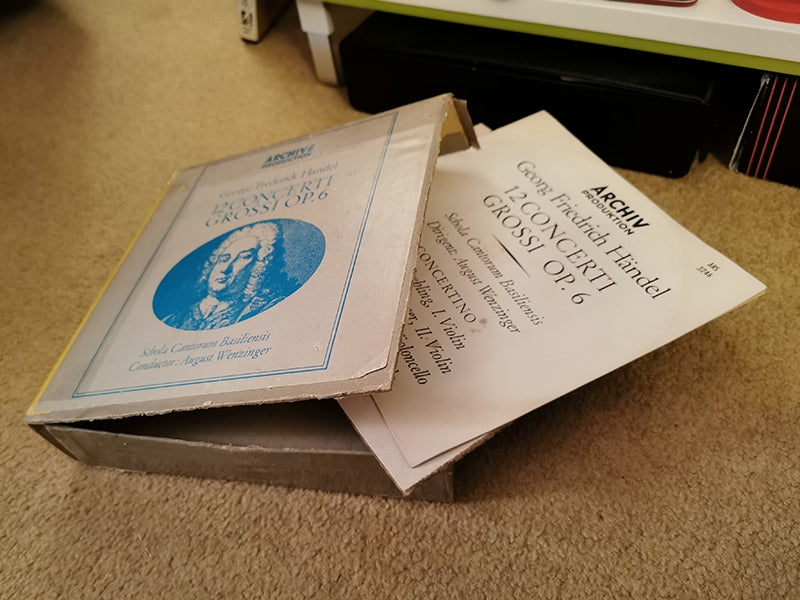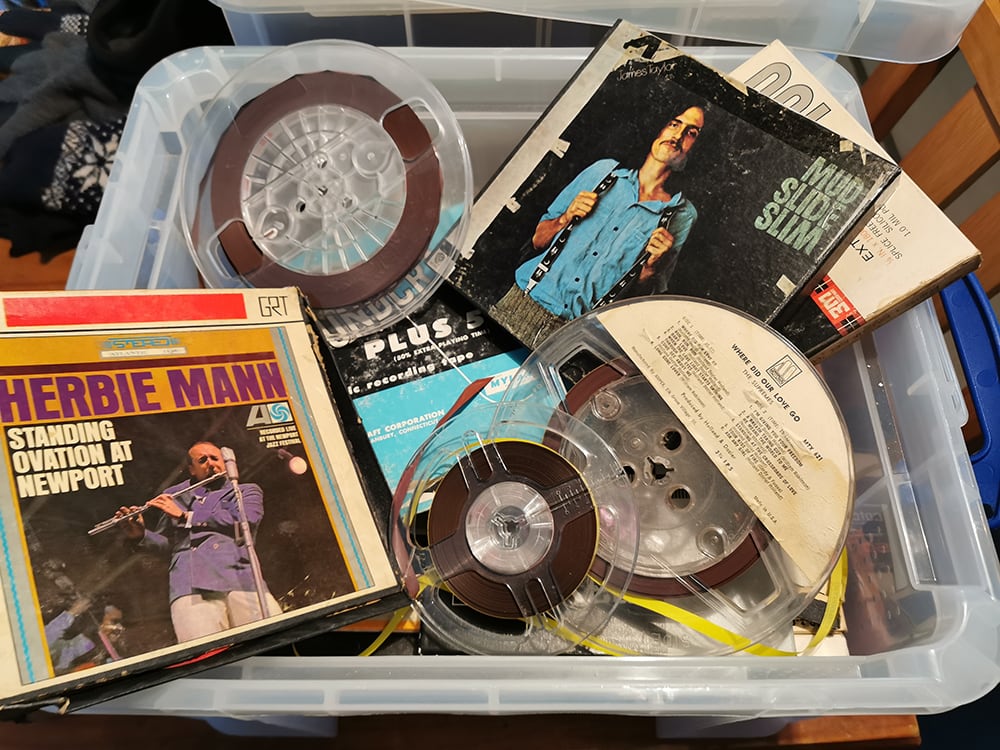Following on from last month’s litany of offenses attributed to the manufacturers of pre-recorded tapes, please be aware that not all the misdeeds were committed by the record labels. Once you start buying vintage tapes online in any quantity, you will soon find yourself cursing the original owners – not, I hasten to add, the vendors, who (if eBay is anything to go by) have no idea what open-reel tapes are or were.
Just as most of the hi-fi sold on eBay says “For Parts Only” to cover any eventuality and to protect the seller, so often does the word “untested” appear that I sometimes wonder if eBay has turned into a gambling site: caveat emptor. The vendors cannot test the tapes as they admit to not having tape decks, or they just don’t know what these weird-looking spools are.
Yes, buying used tapes is risky, but no more so than acquiring used LPs. Let me illustrate this, before going into full-strength rant mode. I have now curated around 1,300 tapes out of all the tapes acquired during the past four years, which means cleaning them up, re-spooling, adding leader and tail, and ultimately listening to and rating them. As I am no longer buying tapes, I should be able to finish cleaning and testing the rest of my haul over the coming year.
My system is simple: I place a green sticker on the box for VG+ to Near-Mint copies (and on the few tapes I’ve been fortunate to find in an unplayed, still-sealed state). A yellow sticker goes on each tape which is playable but with minor flaws, and I use a red sticker for damaged tapes which are just about playable. The red-marked tapes are kept until better copies turn up, which has happened more than a few times.
Here’s an illustration partly to put this in context, but also to prove that – for the most part and in direct contradiction to what you’ll read shortly – the tapes’ original owners took better care than most LP users do. How so? Let’s go with some numbers, though this is but a sampling of one person’s library, and some of you might not consider 1,300 tapes a reasonable example. But bear with me.
Out of these 1,300 fully-tested tapes, which I have listened to in real time, only 23 have been thrown out completely. By that I mean they were totally unsalvageable, e.g., partially erased, chewed-up, spliced multiple times, wrong tape on the spool, stretched, etc. I can be so precise about the number I’ve had to discard because I kept the empty boxes, should a better copy but with a tatty box turn up. Fewer than 80 tapes have red dots, and maybe another hundred earned yellow dots. In other words, over 1,000 tapes out of 1300 are excellent, not merely acceptable, by any measure.
Now, let’s compare that to LPs. If you bought 2,500 LPs from multiple, random eBay vendors, all of them citing “Not Tested” to cover their butts, what percentage would be utterly scratch-, skip-, fingerprint- or dirt-free? I doubt 90 percent would be VG+. I say this to put the remainder of this column into perspective, because what follows is a long, whining kvetch despite my good fortune. And I have, overall, been lucky.
Everything I have experienced with used pre-recorded open-reel tapes defies all the naysayers who refuse to believe that magnetic tapes can survive, especially when poorly stored and/or unplayed, for 40 to 60 years. I can only recall audible print-through on two tapes, and not enough to be downgraded to a yellow sticker. None have visibly shed their oxides. I remain both delighted and baffled by the survival rate.
Thus, in my experience of used tapes vs used LPs, the anti-tape brigade needs a serious re-think. As I write this, I’m listening to a well-preserved copy of von Karajan conducting Schubert No. 7 on Deutsche Grammophon from 1969, one of my “younger” tapes, and it is simply above reproach. It is indicative of the majority of my acquisitions from over 100 different vendors. Their dads and grandfathers must have been fastidious audiophiles.
Now, time for me to go full-on OCD. Two issues ago (Issue 158), I regaled you with the incident in February when a staffer at a local record shop told me how the newbie LP buyers don’t know how to handle vinyl, and how they get customers coming back with utterly savaged albums, wondering why they won’t play. I suspect or imagine that 60 years ago, some buyers of pre-recorded tapes might have been similarly lacking in the know-how required for handling tapes properly.
Challenging that supposed presence of ignorance vis-à-vis tapes are two facts. The first is that tape decks were expensive, thus ruling out a younger demographic, while the second is even more suggestive of careful owners: pre-recorded tapes cost typically double that of LPs. So who in his or her right mind would treat them with such abandon and neglect, if not contempt?
Here, then, are the myriad malfeasances one must anticipate when buying pre-recorded tapes:
1) The Tape Loop of Death
Some spool types have a pin in the center of the aperture where you thread the tape for spooling. If the owner used a closed loop, the tape will not come loose at the end of play. Thus, if you happen to leave it unattended, when the side ends, the tape will tug on the mechanism, and/or stretch itself to unplayability.
Why anyone would make a permanent fixing loop escapes me. I realize that there are numerous methods to activate auto-reverse machines – a recorded tone, metallic sensor tape, etc. – so I can only imagine that some auto-reverse decks must have required a tug at the end of the side, which this loop would accomplish. I was caught out by this twice, ruining two tapes. I don’t know if it inflicted any damage on the machine. That said, it’s one of my pet (tape) hates.

An example of the Tape Loop of Death.
2) Splicing Two Tapes Onto One Spool
Aside from major classical works, hardly any pre-recorded tapes fill a 7-inch spool. For some owners, however, space-saving took precedent over preserving each album on its own spool, thus throwing cataloguing out the window. Usually, they would splice two tapes from the same artist onto one spool, but often a different performer. I must have had 20 examples of this, which – because I am so anally-retentive – forced me to separate them and to find a spare, empty spool and box to house the second tape. Bye-bye original box and reel, but hello bonus albums if, say, I bought a box of ten tapes and it turned out each contained an extra, unexpected tape. This one’s more annoying than aggravating.
3) A and B Sides Flipped
Is it really that difficult to turn over the spool so the label-side (A-side) contains the start? I stopped counting the tapes that arrived like this. As it’s easily corrected by flipping the spool over when the first side is played through, this is merely an inconvenience, if still an indicator of a lack of care for an expensive item.
4) Tape Twisted So the Play Surface Is On the Outside
This has happened more times that you might think, probably because the user was sloppy and put a twist in the tape when spooling it up if rewinding. It happens. This is easily remedied by putting a twist back in when curating it to get it right-side-out. (Note: I have been informed that there were machines made in Germany that had the recorded surface of the tape on the outside, but I have no further information.)
5) Chewed So Much of Beginning of the Tape As To Lose Recorded Material
This is a direct result of the record labels not fitting leader tape and tail. Careless users would thread the tape poorly, chewing up or tangling so much of the tape that it would eventually break off, taking with it the opening of Side A and the end of the last track on Side B. I must have had 10 or 12 tapes so butchered.
6) Turning a 1/2-Track Tape Into 1/4-Track
Yes, you’ve read that correctly, and so far I have only found one tape where this has happened. I put the tape on as the box instructed – 1/2-track – but it was clearly 1/4-track. Two things caused me to make this strange discovery. The first was that the track listing was for the 1/2-track version. The second was when I flipped it over to play the B-Side, it was a completely different performer. What I deduced is that some cheap b*stard, to save tape, put it onto 1/4-track machine and recorded the other material, reducing the original recording’s track width. Sure, it’s clever lateral thinking, but about as tight-fisted as ordering clothes online, wearing them for the weekend, and sending them back for a refund.
7) Accidental and/or Deliberate Dropouts
A few of my tapes have short portions that are completely blank or silent (and only on one side, so I know the tape is physically intact), which suggests that the user accidentally hit Record. I find this hard to understand, as every tape deck I have owned requires quite deliberate activating of a record mode, usually pressing Record and Play simultaneously, or some other safety feature. As this cost me a playable copy of one of the rarest Beatles tapes, I curse the inconsiderate a*shole who was too cheap to buy a blank tape to record garbled children’s noises.
8) Mold, Tears, Mouse Droppings
A regular pre-recorded tape, and by that I mean a single album with a playing time of 35 minutes or so, cost anywhere between $8 and $13 in 1960, or $80-$125 in today’s money. What, then, would a premium item consisting of two tapes filled to the edges, with a total playing time of 165 minutes, have cost? And yet a deluxe set of Handel’s 12 Concerti Grossi Op. 6 was treated with the same disdain as a discarded Big Mac container: torn lid, and split sides, with one of the tapes stretched and impossible to spool properly.

This is no way to treat Handel.
There’s worse. I have had moldy, mildewed boxes, some with mouse turds inside, chewed corners, water stains from obvious flooding, bits of food, scribbles from a child let loose with a crayon, and other signs of neglect such that a friend warned me to wear gloves when handling them and not to breathe in too deeply. It comes with the territory, which is why I am preparing you if you are about to embark on the pursuit of used tapes.
But as I said earlier, the abused tapes are outnumbered by good, clean examples, and by more than 10 to one. As for the vendors – probably the children or grandchildren of the original owners, who found the tapes in an attic or cellar – they cannot be blamed because they simply don’t know any better. Or (he said, in full-on schadenfreude mode) what they’re missing.
Header image: scandalous treatment of open-reel tapes. All photos courtesy of Ken Kessler.


